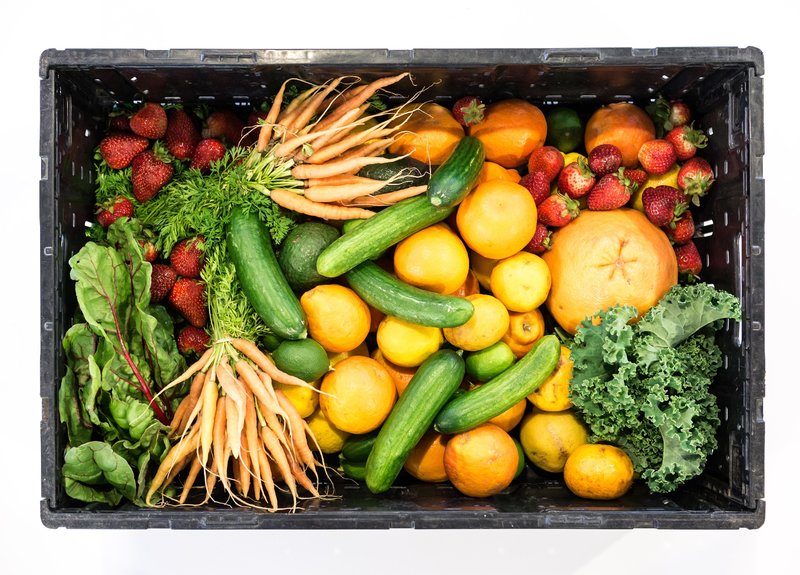Bag and box schemes are now a very common way for community-run food co-ops to sell fresh produce. They both involve selling a selection of different fruit and vegetables - the main difference is that boxes are often larger and have more varieties in them, so may cost a bit more.
How they work
With most bag and box schemes, customers do not get a choice about what they get, instead receiving a different selection of produce every week based on what's in season or the best value.
Some bag/box schemes only sell vegetables, some sell a mixture of vegetables and fruit while others sell fruit as an add-on e.g. customers can buy a veg box for £7 and an addional fruit bag for £3. Typically, a weekly bag or box will cost £5-8 and have 4-8 varieties (orders can also be worked out by weight e.g. £7 for a minimum 3kg of vegetables).
Bag or box schemes work on a pre-order and pre-pay system meaning customers have to order and pay in advance. For bag schemes, this is usually done on a weekly basis paid for with cash. Some box schemes, however, require you to order a month in advance and set up a regular standing order to pay a fixed sum regularly into the food co-op's bank account.
Even within bag and box schemes, there are differences in the way that they operate based on whether the produce is delivered unpacked or pre-packed.
Unpacked
In many bag schemes suppliers deliver loose fruit and vegetables that are packed by volunteers at a community venue. Rather than weighing out the produce, it is divided up equally between the number of bags. For instance, with 60 apples and 15 bags, each bag gets 4 apples. This makes the role for volunteers much less complicated as they just need to count out the produce rather than weighing everything.
Prepacked
In some bag or box schemes, the produce is delivered pre-packed. The boxes have already been filled either directly by the supplier (often a local farm), food co-op volunteers or staff at a central location. In this type of model, the food co-op outlet is merely a drop-off point. This means that the role of volunteers at the venue is often much simpler as they only need to take orders on behalf of the food co-op rather than packing bags or boxes. Some box schemes may also choose to do home deliveries rather that dropping off the produce at community venues.
Advantages and disadvantages to consider
As the food co-op receives all orders in advance, the main advantage of bag and box schemes is that staff can work out exactly how much to order and in doing so, end up with little or no waste. Doing your finances for box or bag schemes is also simple as usually the bags or boxes are priced at a nice round sum, such as £7 bags.
The main disadvantage of bag schemes is that your customers do not get to choose the produce they get. Bags often contain only between 4 or 5 varieties of produce while a box may contain 8 or 9. This is fine for some people and they often like the surprise of not knowing what they will get each week. However, for others who are less confident with cooking and may have more specific preferences, a bag scheme may not suit them. The variety of produce offered by your bag or box scheme is important to consider as with limited variety it can be more difficult to appeal to a wide customer base, some schemes address this by adding more unusual items in larger boxes.
To find more useful food co-op related information visit our homepage
Food Co-ops toolkit: The Food Co-ops Toolkit will give you all the information you need to set up your own food co-op.
